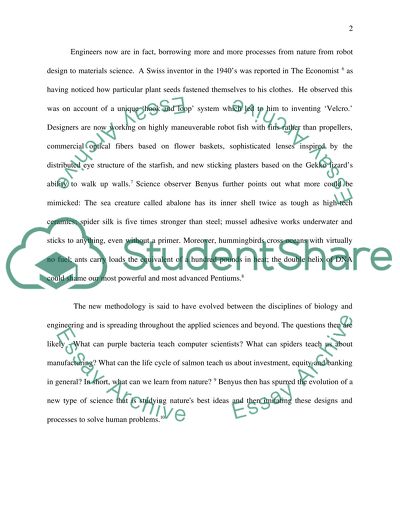Cite this document
(“Biomimicry Essay Example | Topics and Well Written Essays - 1000 words”, n.d.)
Retrieved from https://studentshare.org/health-sciences-medicine/1506662-biomimicry
Retrieved from https://studentshare.org/health-sciences-medicine/1506662-biomimicry
(Biomimicry Essay Example | Topics and Well Written Essays - 1000 Words)
https://studentshare.org/health-sciences-medicine/1506662-biomimicry.
https://studentshare.org/health-sciences-medicine/1506662-biomimicry.
“Biomimicry Essay Example | Topics and Well Written Essays - 1000 Words”, n.d. https://studentshare.org/health-sciences-medicine/1506662-biomimicry.


